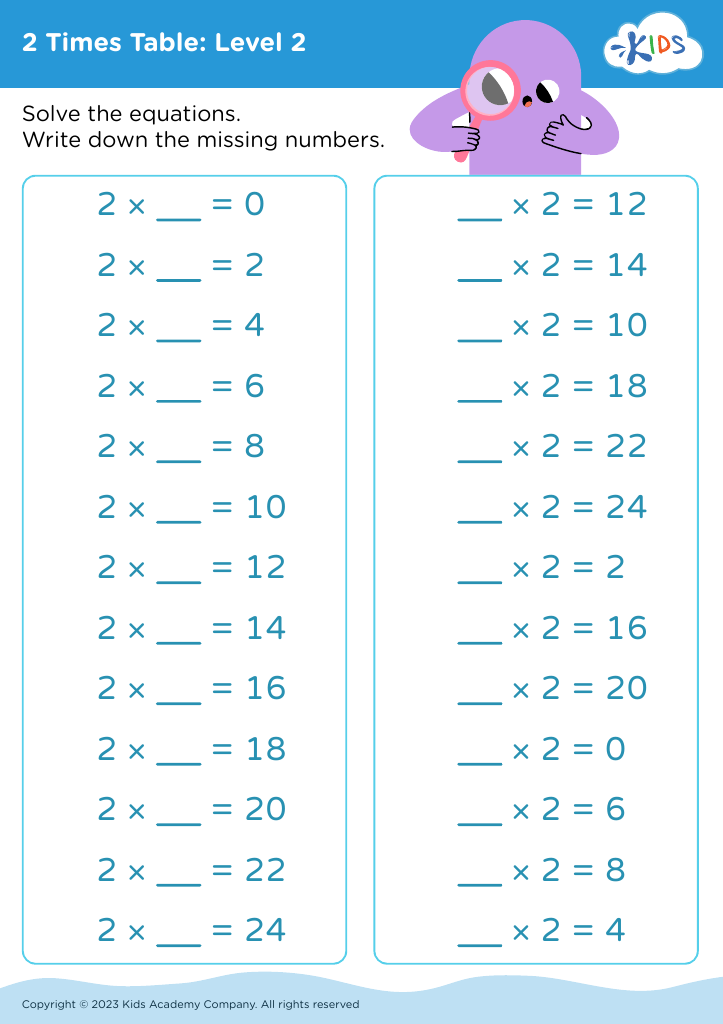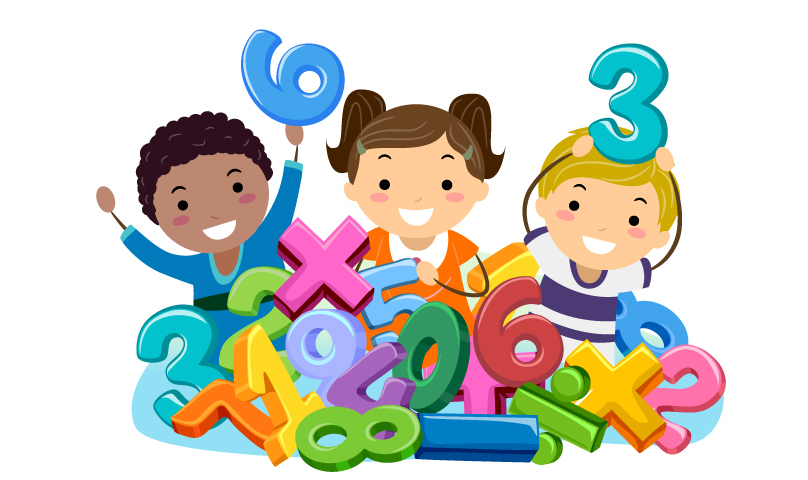Understanding times tables Normal Advanced Times Tables up to 12 Worksheets for Ages 6-8
3 filtered results
-
From - To
Discover an engaging and effective way to help young learners master times tables with our "Understanding Times Tables: Normal & Advanced Worksheets for Ages 6-8." Our comprehensive collection covers all multiplication facts up to 12, designed to cater to both beginners and advanced students. These expertly crafted worksheets promote mathematical fluency while boosting confidence. Each worksheet is tailored to break down complex concepts into approachable steps, making learning fun for kids. Equip your child with the essential skills they need and watch them excel in their math journey through these dynamic and interactive times tables resources. Perfect for home or classroom use!
Understanding times tables up to 12 is fundamental for children aged 6-8, serving as a cornerstone for their math education. Parents and teachers need to prioritize this because a solid grasp of multiplication facilitates the learning of more advanced mathematical concepts such as division, fractions, and algebra. Early mastery of times tables enhances numerical fluency, allowing children to solve problems more quickly and efficiently.
When children understand times tables, they build confidence in their mathematical abilities, encouraging a positive attitude towards the subject. This confidence can translate into better performance in school and a greater willingness to tackle challenging math problems. Furthermore, knowing times tables is essential for real-world applications like calculating costs, measuring ingredients in recipes, and managing time—all of which are valuable life skills.
During ages 6-8, children's brains are highly receptive to memorization and pattern recognition, making it an ideal period for learning times tables. Incorporating fun and engaging activities, such as songs, games, and puzzles, can help solidify this knowledge. Teachers and parents should work collaboratively to reinforce these skills at home and in the classroom, providing the practice and repetition needed to achieve mastery.
Ultimately, a strong foundation in times tables can set children on a path to academic success and lifelong mathematical competence.













